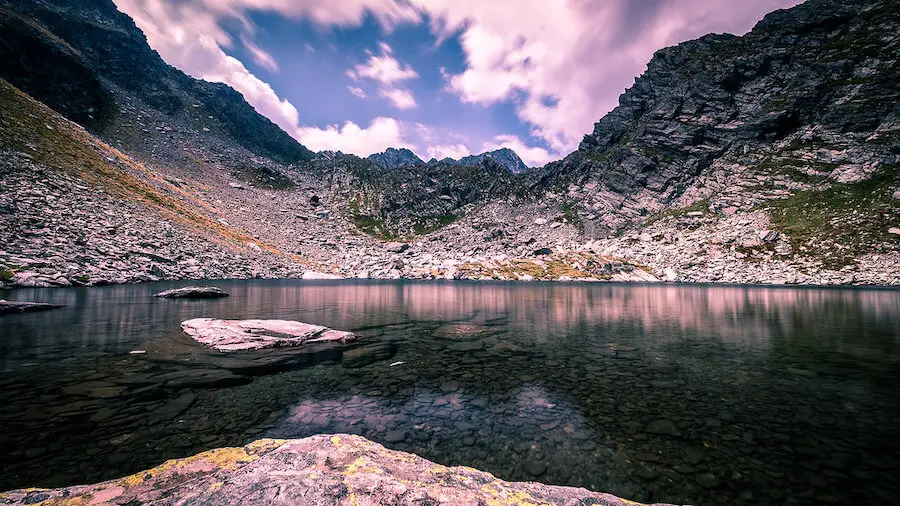Landscape photography involves capturing a scene that reflects the essence of outdoor life. It gives the feeling that you are witnessing something fantastic.
Viewers should experience many emotions when seeing your artwork. The feelings you undergo are what you want others to share.
Landscape photography honors the outdoors and natures beauty. These pictures immerse the spectator in the scene and flawlessly reflect the atmosphere and emotion of the place.
If you are about to become a landscape photographer, you must learn various things before mastering it as a professional.
Dont skip this article if you want to know the details!
Table of Contents
What Are Differences Between Landscape And Portrait Page Orientation?
Since the beginning of photography, the words landscape and portrait have been used interchangeably.
Additionally, they are employed for printing documents or images. However, the notion of landscape and portrait is similar in many ways in photography.
Lets scroll down to tell them apart!
What Is Landscape Photography?
Landscape often refers to the cameras orientation when taking photos of subjects like natural landscapes.
The upper and bottom borders are more comprehensive than the edges, just the same as your television, which is horizontal.
A landscapes components are frequently considerably broader instead of being higher.
Imagine looking out onto a meandering river or rocky mountains, with a soft clear sky above it and barren farmland in the front.
Holding the camera in full screen can help you get the most of the scenes most outstanding elements.
Doing this gives you a better view of the mountain while capturing fewer shots of the background and the sky.
With this method, the mountains become the focal point of the picture, and the arrangement is nicely balanced.
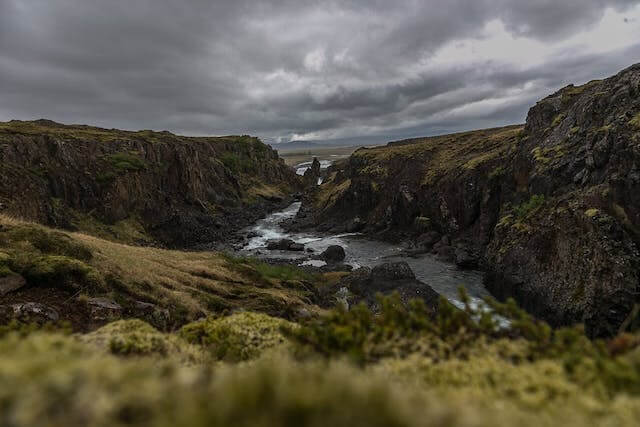
What Is Portrait Photography?
The term portrait refers to a picture where the frame is vertical, and the side borders are broader than the upper and bottom lines.
Portrait orientation is best for taking pictures of individuals, as its name suggests.
As a result of the subjects greater height than the width in this instance, your photograph will exhibit the same quality.
Think of your head; it will be higher than broad. You generally take photos of the face, neck, and hair while shooting a profile picture or face portrait.
Due to these factors, the head seems taller than more expansive and is, therefore, more suited for portrait orientation.
It will seem quite natural to frame your face in a portrait, and it will be ideally bound to make the picture appear balanced.
This orientation isnt just helpful in photographing portraits of people; it can be imaginatively used for various items and settings.

Landscape Vs. Portrait: Which Is Better?
There are more effective methods for taking and viewing pictures and videos. Everything relies on the images intended use and the image composition.
When taking pictures, the first fundamental compositional principle to keep in mind is whether to take a landscape or portrait shot.
You should employ a portrait format when composing your shots of specific subjects since it makes them look better.
On the other hand, when photographed in landscape orientation, others will appear more attractive.
You will better know which to select for the optimal composition and balance with practice.
Although there isnt a clear-cut right or incorrect choice, there are excellent compositional standards to adhere to.
A high subject, for instance, wont seem as appealing when captured in landscape orientation.
If there is extra space on either edge of this subject, it will seem compressed, and the picture will break up.
Likewise, when capturing a wide-ranging object in a headshot, the subject may strive to protrude beyond the edges of the frame.
Lets explore more thoroughly when to apply portrait or landscape mode.
When you should use landscape orientation:
Landscape photography is the most popular application of landscape mode, as its name suggests.
A landscape scene is often expansive, which is the leading cause. The landscape is filled with lakes, mountains, and an incredible sky.
You should apply landscape orientation to catch everything you want and produce an attractive and dramatic shot.
Although you might photograph a landscape in portrait format, it depends significantly on the photo composition.
A portrait could be preferable if the object is lofty, like a forest or big rock.
The ideal representation of the scenes horizontal or vertical components will depend on your preferences.
Street photography, group pictures, or event photography are among the photography styles that employ landscape the most.
When taking street photos, you are typically in a setting with various horizontal edges and objects. It is usual to see streets, buildings, and items flowing horizontally.
You can catch the main focus and have sufficient movement in the backdrop to convey a narrative when you choose landscape mode instead of portrait one.
Larger groupings of people are frequently present in group photographs and event photography.
The landscape format will be necessary to accommodate them all in the composition.
If you capture in portrait mode, your subjects will be crammed into the picture, and there will be extraneous objects at the upper edge and the images bottom.
When you should use portrait orientation:
When taking a portrait, you must hold the camera such that your picture and the camera are both taller rather than broad.
Photographic genres that frequently employ portrait mode are particularly easy to recall.
Portraiture photography is the earliest and most visible example. Because the head and face are taller rather than broad, they fit more easily into the portrait arrangement.
Although many photographers take headshots in landscape mode, the composition ratio often feels odd.
Several genres employ this orientation besides portrait photography.
You will utilize the portrait mode when you need to take a full-body picture, like in a couple of pictures or fashion shots.
Another case is when you take a picture of an oversized, towering item. It might occur in an architecturally complex tall structure or a landscape with a sizable rocky outcrop.
A tall object may also seem highly dynamic when photographed by moving a bit closer, giving the impression that it is looming over you.
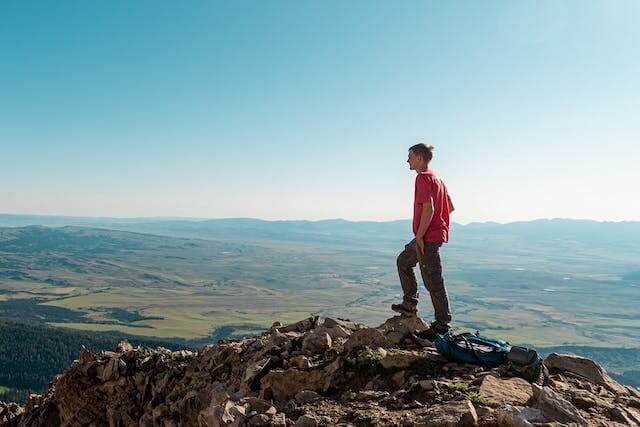
What Are The Common Types Of Landscape Photographs?
Now that you have a better understanding of landscape photography.
Lets talk about some typical landscape photography styles that you should know if you want to have beautiful pictures.
Mountain Photography
Photographs of mountains have become among the most famous landscape images.
It might be challenging to reach the high positions required to acquire the most satisfactory image, which is a particular issue with mountain photography.
For this reason, its crucial to pack lightly and avoid bringing a lot of bulky lenses and camera bodies.
The air gets fresher as you get higher up in the mountain range. Landscapes at high altitudes frequently have no traces of human habitation.
Such a large number of these images would also be at home in the distinguished genre of purist landscape.
Mountain photographers aim to explore uncharted territory to take original pictures of subjects that people have never seen before.
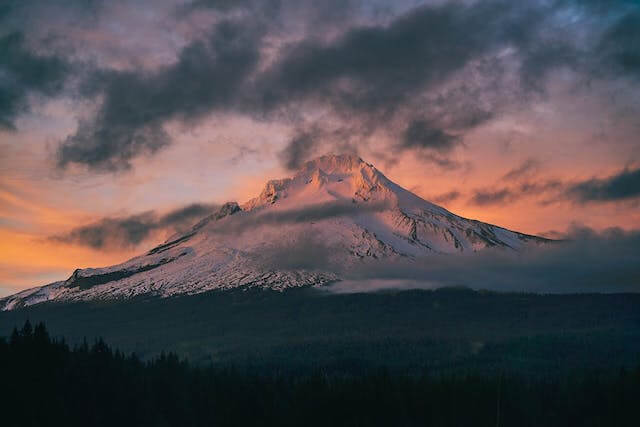
Seascape Photography
Among the best places to capture beautiful photographs is by the sea or any other body of water.
You may depict both the peaceful and aggressive acts of nature and the movement from land to sea by contrasting the sea with an object in the front.
Using higher shutter speeds to smear the motion of the waves is only one of many imaginative possible options for you.
Alternatively, you may utilize a photoshop filter to reduce glare or even out the contrast between the backdrop and the water.
Understanding camera settings is crucial if you prefer to take pictures of water.
You must comprehend how varied aperture, ISO settings, and shutter affect the seas lighting and movement.
You can attain the ideal exposure using the cameras metering settings. Thinking about the pictures you prefer and the kind of lighting there can also be helpful.
For instance, you may prepare for the right lighting conditions if you plan to take photos around dawn or sunset.
Coastal Photography
The contrast along the coasts provides some excellent options for landscape pictures.
Depending on the particular shore you want to photograph, you may take different pictures.
You may find a location from which you can photograph downward. Alternatively, you can capture some photos of the coastlines crashing waves that are more closely framed.
Desert Photography
If you are fortunate enough to visit a desert, its warm color scheme, surreal forms, and distinctive textures are guaranteed to motivate you.
Although you may have to endure some challenging circumstances to capture the image, desert landscape photographs are of an unrivaled caliber. Therefore the effort is worthwhile.
Cloudscape Photography
You begin experimenting with this kind of photography anywhere in the world.
When photographing cloudscapes, it might take some effort to understand precisely how to operate in various lighting conditions.
Nevertheless, polarizing filters might help you capture your subject with more contrast and depth.
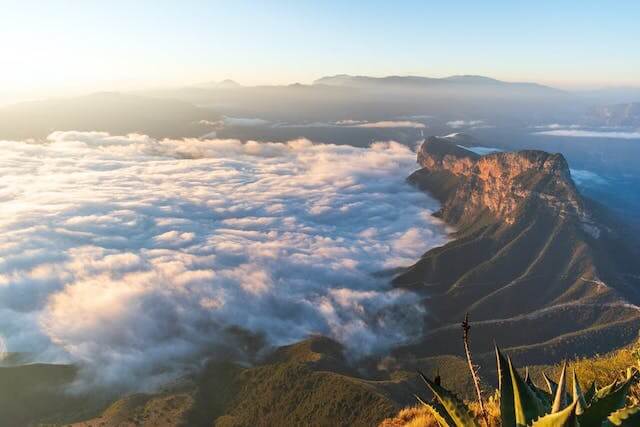
Forest Photography
The difficulty for a photographer of forest landscapes is that occasionally you cant find the forests.
There are a lot of things happening in the forest. However, you can obtain some amazing photos if you start thinking about the trees patterns and how the light interacts with the forest.
You may produce a variety of moods, for instance, using the interaction between shadows and light.
You may see various fascinating patterns when the light filters through the trees leaves.
You will receive some beautiful photographs as a prize if you reap those benefits.
In addition, look for color and contrast. Consider the vivid fall hues of the shifting leaves.
Photographing the path through the forest and utilizing the shadows will also yield spectacular pictures.
Panorama Photography
Whatever the topic of a landscape photograph is, you may elevate it by taking a panoramic of it.
This technique involves shooting many photos and fusing them.
The issue is to take the photos in the camera with the proper exposure, yet it may generate amazing shots.
The camera can also include an option to take one picture first, then move right or left to take the images that will later be patched together.
Maintaining level when you shift the camera to the left or right is the key. Lifting just a bit will prevent the landscape from aligning correctly in the last picture.
Astrophotography
Although there is an increase in interest in this style, there are also challenges.
Since any amount of camera shaking may muddy your image, you will undoubtedly use shutter release wire and a tripod to capture this kind of landscape.
You may also want to include a striking foreground to accent the sky at night.
You may utilize your silhouette if you do not have any magnificent landscape view to use as the foreground.
Since youll undoubtedly be working with low-light conditions, you must also understand shutter speed, ISO settings, and aperture.
Sunrise/Sunset Photography
Sunrises and sunsets provide stunning hues and lighting that can improve any other landscape photograph you take.
You may utilize the warm hues of the sky at sunset or sunrise to contrast your landscape.
Otherwise, the sun may be the main subject of your scenery photography.
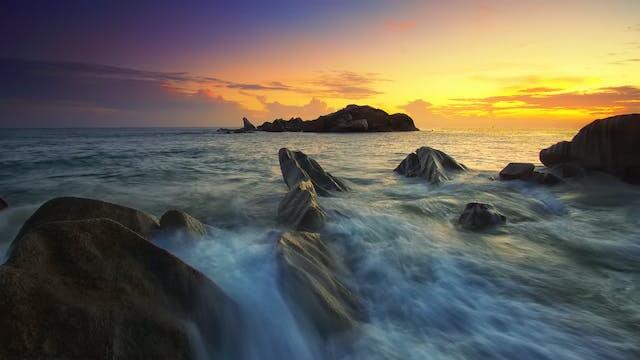
Aerial Photography
Certain landscape photographers seem lucky enough to get close accessibility to the sky.
Several technical difficulties with aerial landscape photography are not present in some other sub-genres.
For instance, using a tripod is impossible because your camera will be subjected to the aircrafts vibrations.
The best approach to taking images of expansive, endless landscapes is from a great height above the planet.
You cant all, however, afford to get helicopters. Therefore, you will have to continue to take pictures of the world from the ground.
Storm Photography
Several landscape photographers enjoy the pursuit during storms because its exciting.
Storm chasing may provide you direct exposure to particular photographs of intense or unique weather phenomena, like tornadoes.
Given how unpredictable storms are, this kind of photography may be hazardous.
Landscape photographers may invest considerable time in arranging to be in the best spot for capturing the most striking shot.
Urban Photography
Rather than focusing on a specific urban topic, like a street scene or building, urban landscape photography tries to capture expansive views of cityscapes.
Instead of focusing on the details of a city picture, the intention is to convey an overall image of the urban environment.
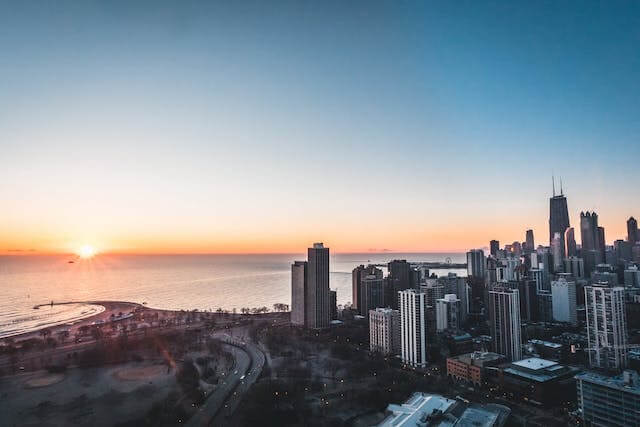
Representational Photography
No matter what style of scenery photography you choose, the outcome is representational landscape photography if you aim to capture an accurate depiction of the subject as it did exist.
This style immerses the spectator in the picture and gives them a feeling of what it would be like to be truly there.
Abstract Photography
Your images can be classified as landscape photography even if the earths natural characteristics arent immediately apparent.
In contrast to photographing actual objects, abstract photography focuses on objects forms, colors, and textures.
However, the distinction between abstract photographs and photographs of abstract landscapes causes the criteria to become hazy.
How can you be sure that what you see is a natural element linked with the earth if you may never be sure of what you are looking at?
For this reason, some photographers never consider this type a landscape photography sub-genre.
Time Lapse Photography
Time-lapse photography is entertaining but also complicated. Setting the picture time interval to correspond with the movement is one piece of advice.
The period between photos should be no longer than 1 to 2 seconds for quickly moving things, such as vehicles or clouds.
The interval could be as long as many minutes or hours if the object is slowly moving, such as a flower growing or a building site.
Another suggestion is to use manual mode when taking pictures so that the ISO, aperture, and shutter speed remain constant.
Long Exposure Photography
This method is easy to use and may produce stunning, dramatic photographs.
They are the sorts of pictures that feature effects like water that is blurry or light rays.
Planning for your shot is also crucial. Ensure you get a suitable area to set up the camera, and confirm that the weather can support your plan.

Why Should You Take Landscape Photography?
Nowadays, almost everyone owns a camera of some kind. You should try landscape photography for the following reasons:
Taking Pictures Of Landscapes Is Simple.
Anyone may experiment with landscape photography. Its so easy to access.
Take your smartphone outside and start taking pictures of what you observe.
There is no need to be concerned about increasing light via reflectors or flashes.
Additionally, there are many places where you may get fantastic photographs by just holding the camera out through your vehicles windows.
It Allows You To Enjoy The Outdoors.
Landscape photography is impossible to achieve while sitting on your sofa.
It encourages living an active lifestyle by getting you outside of your house and into intriguing places.
It has almost no drawbacks and will improve your general wellbeing.
It Helps You Gain Public Attention.
An excellent method to promote yourself and grow a community on social networks for your work is by taking pictures of the landscape.
Almost everyone enjoys looking at gorgeous landscapes, and high-quality pictures attract viewers immediately.
Its doubly helpful if your primary goal is to take stunning photos of your neighborhood.
If your photos are excellent enough, viewers will be able to easily relate to the themes, giving you the chance to promote your artwork and earn commissions.
It Improves Knowledge Of Light.
Landscape photography will significantly advance your knowledge of exposure and light, which will improve your entire photographic performance.
It makes you contemplate things like contrast, highlights, shadows, mid-tones, front lighting, backlighting, golden hours, sunrises, and sunsets.
Your photos will significantly advance if you know how to utilize light to express your narrative effectively.

What Makes A Landscape Photo Good?
When taking photos, numerous considerations may occasionally be overwhelming.
When narrowing it down, there are some elements affecting your photography.
Youll have no trouble taking stunning images if you concentrate on the following factors.
Light
The most crucial component of a landscape shot is light. A beautiful place will look unappealing in a snapshot taken in the harsh noon light.
A common area will become exciting and unforgettable when a picture of it is shot at the ideal time when the lighting is impressive.
Any light has certain inherent flaws. Clearly understand what to accomplish given the available lighting circumstances.
Photographers typically like to take their pictures during the golden hour at dawn and dusk.
Utilize the chance to hunt for intriguing shadows whenever the weather is bright and severe.
A cloudy day is ideal for close-up photography because of the clear sky. What about the stormy days? The spectacular clouds that come along with a storm may be the greatest.

Subject
The following step is to confirm that your essay has the main subject. Remember that even though it may seem relatively straightforward.
Photos without a specific subject might be uninteresting and forgettable.
Be patient and ensure that each shot has a unique subject if you expect your photography to create an impression.
Here are some of the common subjects in landscape photography you can consider:
Flowing Water
Consider how you would depict the characteristics of a stream or a river in the photo.
For instance, the appearance and sensation of a large, languid river differ from that of a swift alpine torrent.
The photography focal point is the body of water. It might be a diagonal, another leading line, a horizontal line, or a form that balances out other frame elements as a component in your layout.
You may also make use of the waters reflections. You may, for example, employ specific reflections to highlight the image, like the hues of reflected fall leaves.
It might not be delightful to see other reflections. You may adjust your position to add or exclude such reflections or retry when the light is shining from a new point.
If you want to lessen a portion of the reflections and improve contrast, consider applying a polarizing lens.
Seacoasts
Take note of the following contrasting scenes:
- A serene tropical island with white sand and blue-green waves lapping at the shore.
- An overcrowded holiday beach.
- Striking a rocky coastline with storm waves.
Understanding how to express the type of coastline you are capturing is critical.
Thus, before photographing, you must determine the best moment of the day, season, and weather to obtain an excellent panoramic view and composition.
You should attempt to depict the variations among shorelines in the pictures because every coastline is unique.
Forests
Consider the characteristics and mood of the woods you intend to convey in your shot, just as you would with water.
There are specific characteristics in both bright and open and deep and gloomy forests that contribute to the expression of the mood.
Locate the focus of interest, which might be a branch of trees slightly different, a road that winds through, or even a vivid flowering vine.
Mountains
The mountains might be rough, weathered, dangerous, or alluring. Look for components that symbolize the emotions you want the viewers to experience.
The composition, perspective, weather, and light must be suitable and convey the essence of the mountains.
Deserts
You can display the harshness and allure of deserts. You may catch midday heat waves with long lenses to compact them and generate stunning pictures.
Due to the lack of humidity and anthropogenic light pollution, deserts are excellent locations for star photography.
Therefore, the desert seems to have a lot of dazzling stars. Because of the suns varying angles, sand color varies during the day.
You might incorporate the sun in your photo to depict the deserts scorching heat and arid environment.
Plains/Prairies
Due to the absence of any points of attraction in these vast areas, these subjects are some of the complex landscapes to capture successfully.
Most of the time, among the things you convey, it is the vast breadth. Nevertheless, viewers require a focal point.
Find a unique feature, then utilize it to draw attention to the setting and establish scale.
A meandering road, a fence line, or a creek are just a few elements you might utilize to draw viewers into your composition.
Background
The background behind the main subject is also essential. An excellent photograph might be ruined by clutter or other distracting factors.
You must select the right angle to picture your subject to avoid backdrop distractions.
The image should be as straightforward and isolated from the background as you can.

Composition
The same subject provides vastly diverse effects when captured in various ways.
Work on honing your composition expertise if you intend to develop your photography.
You may utilize a variety of strategies and guidelines to make engaging compositions, as shown below:
Rule of Thirds
When arranging the elements of a shot to make an excellent composition, the rule of thirds might be helpful.
Leading Lines
You can use lines in the composition to redirect and guide viewers eyes. Natural or artificial lines are both acceptable.
To create compositional masterpieces with your photographs, look for angles and viewpoints incorporating leading lines.
Foreground Interest
Keep an eye out for items you may employ as foreground components in your composition.
It can be:
- A nearby rock in a creek when capturing a waterfall
- A field of wildflowers with towering mountains as a backdrop
- Anything in the front that will draw viewers attention
How Do You Take Landscape Photography?
Once you understand the fundamentals of landscape photography, you may begin taking your first picture. Here are some guidelines to follow:
Choose A Mid-Range Aperture
Getting an incredibly crisp, clear image is one of your objectives while photographing landscape photos.
Your decision-making in regards to light settings, beginning with aperture, has an impact on this.
Shooting using an f-stop value 2 - 3 stops more fantastic than the least achievable will provide the most detailed, sharpest picture possible.
There may be a slight loss of clarity when choosing an aperture that goes too far toward the extreme of the range, like f/22 or f/2.8.
Nonetheless, you might prefer to experiment with the apertures to get a particular artistic impression if your scenery photograph has visual features in the front, background, and midground.

Select A Lower ISO
Setting the ISO low while still being able to capture with the appropriate shutter speed and aperture is another approach to guarantee the optimum image quality.
It will reduce the risk of the image becoming grainy, which might happen at a higher ISO level. An ISO between 100 and 400 generally works nicely.
Nevertheless, you will not want to lose your opportunity since youre set on using a lower ISO to get high-quality images.
You may need to increase the ISO to utilize a specific aperture and shutter speed. If thats the case, do so.
When Necessary, Utilize A Tripod
Finding the shutter speed that will offer optimum exposure may be as easy as knowing your ISO or aperture settings.
When choosing the aperture, set the camera to the aperture priority option to determine the shutter speed for optimal exposure automatically.
A tripod might be necessary to avoid blurring from handshaking if the shutter speed drops too low.
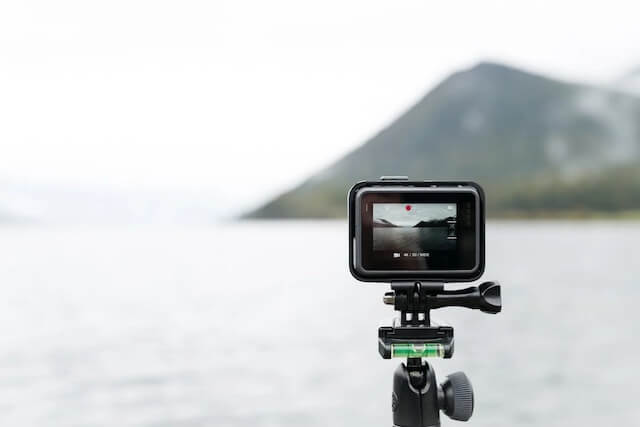
Photograph During The Peak Of The Day
The golden hour is the term used by photographers to describe the moments immediately before sunset or after sunrise.
Go outside at these hours and snap several photos if you genuinely want to capture a beautiful landscape.
Even yet, there are still other periods throughout the day when you may capture landscape photos.
Utilize Polarizing Filters
Several landscape photographers use polarizing filters to improve contrast and color while lowering glare.
Polarizing filters may be beneficial when photographing landscapes with water, sky, vibrant colors, and plenty of reflections.
For instance, you may enhance the skys vivid blue using polarizing filters or lessen the glare from water on stones.
Many polarizing filters attach to the bottom of a camera lens by a screw, and the polarization intensity may be adjustable by manual rotation.
The filter also shields your lens glass from dings and other harm, which is an extra benefit.
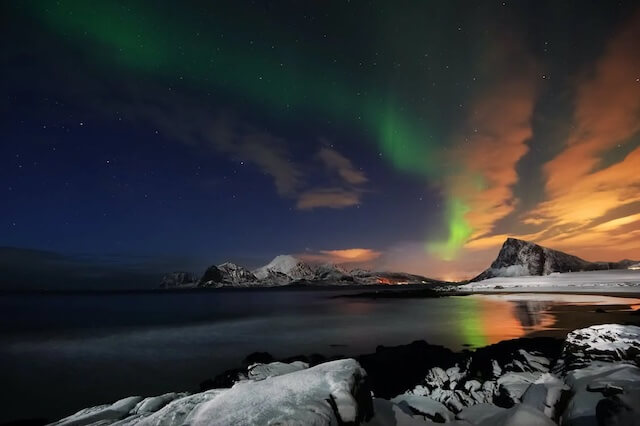
Create A Successful Landscape Image
Subjects are all arranged in a good landscape photograph so that it draws the viewers in, tells a narrative, or arouses particular emotions.
You can consider the above composition, including the rule of thirds, leading lines, and foreground interest.
Extra Tips For Landscape Photography
If you are a novice landscape photographer, the following tips will be helpful for you. Lets take a look!
Finding the right spots might aid in getting the most remarkable photographs. Plan the itinerary and identify different view spots using internet maps.
To achieve the most extraordinary effects, you may also conduct a study on the well-known attractions and landmarks.
Look into the optimum time to arrange for the most fantastic light after deciding how and when to get to a location.
Decide whether you prefer to take pictures at dusk or after sunset by taking a few test photos.
Some locations are ideal at particular seasons during the year. So, consider the seasons while planning your journey.
The ideal wide-angle lens and the full-frame sensor for landscape photography are essential.
You can choose f/16 and f/22 to capture as sharp as possible landscapes.
The ideal camera for taking landscape photos is a DSLR since they have bigger sensors that provide crisper, more detailed photographs.
Because they are more compact and lightweight than SLR cameras, more recent mirrorless cameras can also be good for taking landscape photos.
You may manipulate the skys light with the help of a circular polarizer to enhance cloud definition and help blues stand out.
A neutral density filter reduces the amount of light that reaches the camera, making a picture look dimmer than it is.
If you need to concentrate on minute details, like the moon emerging over a faraway mountain top, you can utilize a telephoto lens or a zoom.
For small subjects, using wide-angle lenses will allow you to come nearer them without using longer lenses to zoom in.
When photographing with a slow shutter speed, its best to use a tripod. Pick a sturdy, transportable tripod.
To capture stunning images, take advantage of golden hours. Sunsets reflect pastels and flames, which can alter the color of a shot.
Try different perspective points and angles of view. Move around, either very high or very low.
Recognize the minor elements in a setting since failing to emphasize them might result in crowded, perplexing landscape photographs.
Reducing superfluous components is the practice of minimalism. When photographing landscapes, keep your vision simple.
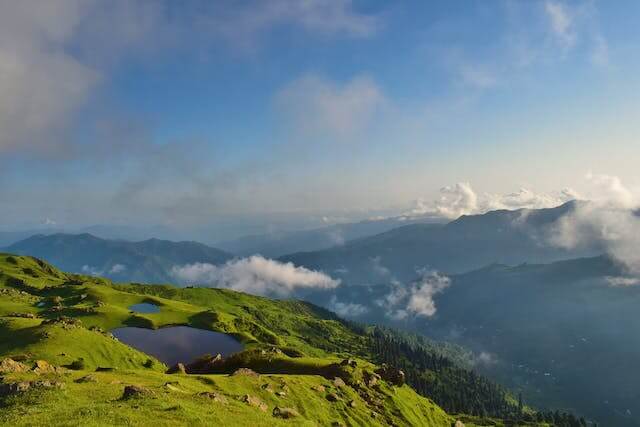
Wrapping Up
This article has guided you on everything about landscape photography. If you like capturing the natural landscapes beauty, lets try this art.
Most importantly, you must learn about the fundamentals like the concept, types, essential elements, and tips to get a successful landscape image.
If you have any further questions, please leave a comment below. Were willing to reply to all! Thanks for taking the time to follow us!

